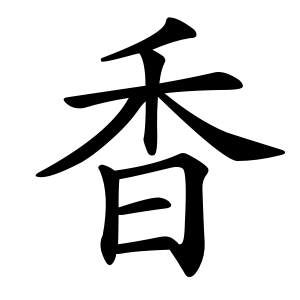香
- fragrance;
- perfume;
- incense;
Etymology
In its modern form, the character 香(향) is a compound ideograph made by combining:
禾 (화) – meaning "grain" or "rice plant"
日 (일) – meaning "sun" or "day"
But according to analysis of oracle bone script (甲骨文, jiǎgǔwén), the earlier form consisted of a grain-related symbol with either:
口 (입 구) – representing the mouth, or
甘 (달 감) – meaning "sweet"
This visual combination expressed the idea of the flavor or aroma that comes when holding grain in the mouth, which led to its association with the meaning of “fragrance” or “aroma.”
The Shuowen Jiezi (説文解字 shuōwén jiězì) interprets the character differently:
It analyzes 香 as a compound of 黍 (기장 서, millet) and 甘 (sweetness), still preserving the idea of a sweet-smelling grain.
A notable example is “gamju” (감주, 酏)—a sweet fermented drink made from glutinous millet—which is mentioned even in the Zhouli (周禮, Rites of Zhou), an ancient Chinese ritual text.
As a noun, 香 generally refers to two main concepts:
1. Incense used in rituals or ceremonies (like ancestral rites);
2. Fragrant energy or scent perceived through the nose.
In older forms of Korean, up until the modern period, 香 was sometimes understood as "a savory smell" (고소할 향). However, the semantic range of "고소하다" (nutty, savory) has since narrowed, so this usage has faded in contemporary Korean.
Usage in Korean
It refers to the smell of something fragrant, and is used in most cases involving aromatic scents or pleasant smells, especially in words like:
향기 (香氣) – fragrance, aroma
향수 (香水) – perfume
향신료 (香辛料) – spices
향내 (香) – scent or smell (usually pleasant)
In short, if something gives off a pleasant smell, this is almost always the character used.
Words that derived from 香
- 竹木日 (HDA)
- ⿱ 禾 日
